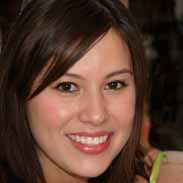Chap 20, other baroque instrumental music – Flashcards
Unlock all answers in this set
Unlock answersquestion
organ, harpsichord, and clavichord
answer
the ___, ____, and ____ were the main keyboard instruments of the Baroque era
question
trio sonata
answer
Arcangelo Corelli established the model for the ___ ____, the favorite form of instrumental chamber music in the Baroque
question
sonatas
answer
____ were also written for solo instruments. Dominico Scarlatti contributed over 550 solo keyboard sonatas
question
chorale preludes; preludes; fugues
answer
J.S. Bach's keyboard music includes ___ ____ (short organ works elaborating on a chorale melody) and ___ and ___ (free-form pieces followed by strict imitative pieces)
question
Well-Tempered Clavier; The Art of the Fugue
answer
Bach's ___ - _____ ______ is his most famous collection of preludes and fugues, and ___ ___ __ ____ is his last and most comprehensive example of contrapuntal writing.
question
ground bass
answer
Baroque instrumental music was often set in forms built on a repeating bass (___ ____)
question
Rococo; sentimental
answer
The French ___ and the German "___" styles ushered in the new Classical era
question
organ
answer
used in church & home, had a pure, transparent timbre
question
harpsichord
answer
different from modern piano in 2 ways - strings were plucked by quills, tone could not be sustained like that of a piano - pressure of the fingers on the keys varied the tone only slightly, producing subtle dynamic nuances but not the piano's extremes of loud and soft
question
clavichord
answer
favorite instrument for the home. soft, gent tone was produced by the action of a metal tangent (lever) that exerted pressure on a string, allowing for some delicate effects not available on the harpsichord
question
sonata
answer
consisted of either a movement in several sections or several movements that contrasted in temp and texture
question
sonata da camera (or chamber sonata)
answer
usually a group of stylized dances
question
sonata da chiesa (or church sonata)
answer
more serious in tone and more contrapuntal in texture, its four movements arranged in the sequence slow-fast-slow-fast
question
trio sonatas
answer
two violins + basso continuo (often 2 performers, cellist or bassoonist and harpsichordist or organist)
question
rounded binary form
answer
2nd section is longer and brings back ideas from the opening
question
grace notes
answer
small ornamental notes that are played quicklly
question
passacaglia
answer
structured repeating bass line or ground bass
question
chaconne
answer
built on a succession of harmonic progressions repeated over & over
question
prelude
answer
a short study based on the continuous expansion of a melodic or rhythmic figure
question
toccata
answer
free, often highly virtuostic, form
question
chorale preludes & chorale variations
answer
body of instrumental works. developed in which organ virtuosity of the highest level was combined with inspired improvisation
question
fugue
answer
a contrapuntal composition in which a single theme pervades the entire fabric, entering in one voice (or instrumental line) and then in another
question
subject
answer
main theme
question
answer
answer
imitation by another voice
question
exposition
answer
at end
question
episodes
answer
interludes that serve as areas of relaxation
question
augmentation
answer
a melody presented in longer time values (often twice as slow as the original)
question
diminution
answer
shorter time values that go by faster
question
opera buffa
answer
Italian comic opera



